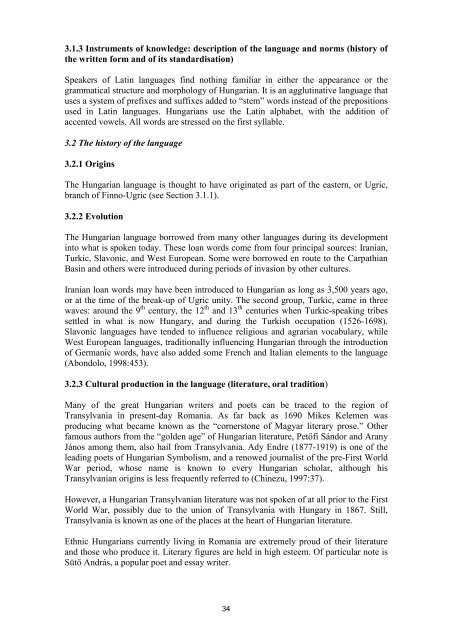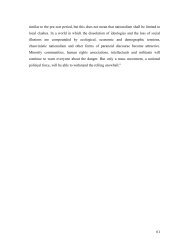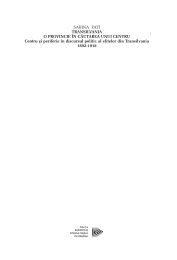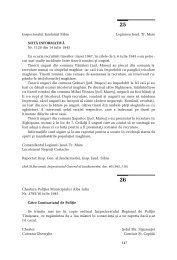Southeast Europe
Southeast Europe
Southeast Europe
You also want an ePaper? Increase the reach of your titles
YUMPU automatically turns print PDFs into web optimized ePapers that Google loves.
3.1.3 Instruments of knowledge: description of the language and norms (history of<br />
the written form and of its standardisation)<br />
Speakers of Latin languages find nothing familiar in either the appearance or the<br />
grammatical structure and morphology of Hungarian. It is an agglutinative language that<br />
uses a system of prefixes and suffixes added to “stem” words instead of the prepositions<br />
used in Latin languages. Hungarians use the Latin alphabet, with the addition of<br />
accented vowels. All words are stressed on the first syllable.<br />
3.2 The history of the language<br />
3.2.1 Origins<br />
The Hungarian language is thought to have originated as part of the eastern, or Ugric,<br />
branch of Finno-Ugric (see Section 3.1.1).<br />
3.2.2 Evolution<br />
The Hungarian language borrowed from many other languages during its development<br />
into what is spoken today. These loan words come from four principal sources: Iranian,<br />
Turkic, Slavonic, and West <strong>Europe</strong>an. Some were borrowed en route to the Carpathian<br />
Basin and others were introduced during periods of invasion by other cultures.<br />
Iranian loan words may have been introduced to Hungarian as long as 3,500 years ago,<br />
or at the time of the break-up of Ugric unity. The second group, Turkic, came in three<br />
waves: around the 9 th century, the 12 th and 13 th centuries when Turkic-speaking tribes<br />
settled in what is now Hungary, and during the Turkish occupation (1526-1698).<br />
Slavonic languages have tended to influence religious and agrarian vocabulary, while<br />
West <strong>Europe</strong>an languages, traditionally influencing Hungarian through the introduction<br />
of Germanic words, have also added some French and Italian elements to the language<br />
(Abondolo, 1998:453).<br />
3.2.3 Cultural production in the language (literature, oral tradition)<br />
Many of the great Hungarian writers and poets can be traced to the region of<br />
Transylvania in present-day Romania. As far back as 1690 Mikes Kelemen was<br />
producing what became known as the “cornerstone of Magyar literary prose.” Other<br />
famous authors from the “golden age” of Hungarian literature, Petőfi Sándor and Arany<br />
János among them, also hail from Transylvania. Ady Endre (1877-1919) is one of the<br />
leading poets of Hungarian Symbolism, and a renowed journalist of the pre-First World<br />
War period, whose name is known to every Hungarian scholar, although his<br />
Transylvanian origins is less frequently referred to (Chinezu, 1997:37).<br />
However, a Hungarian Transylvanian literature was not spoken of at all prior to the First<br />
World War, possibly due to the union of Transylvania with Hungary in 1867. Still,<br />
Transylvania is known as one of the places at the heart of Hungarian literature.<br />
Ethnic Hungarians currently living in Romania are extremely proud of their literature<br />
and those who produce it. Literary figures are held in high esteem. Of particular note is<br />
Sütő András, a popular poet and essay writer.<br />
34









